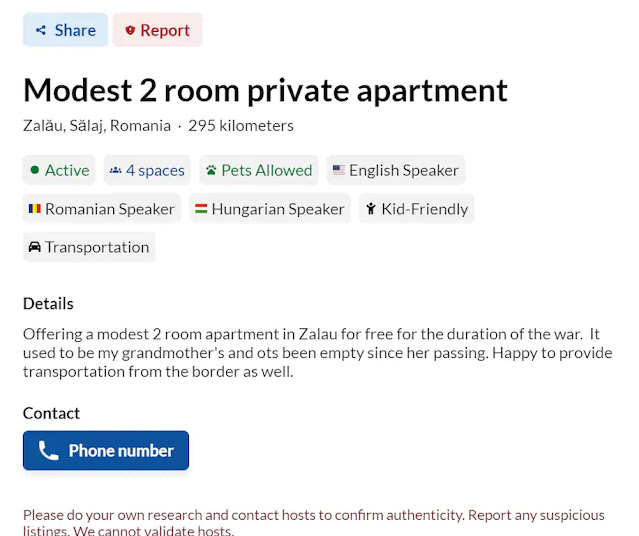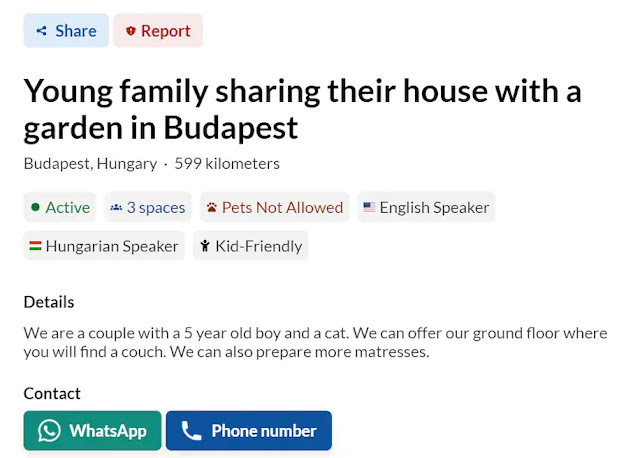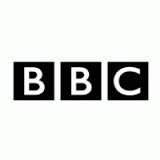You can also watch this video by clicking on the Play Button
3/26/2022
Harvard students help Ukrainian refugees
Avi Schiffmann climbed into
bed after attending a demonstration in San Diego protesting Russia’s invasion of
Ukraine, but sleep didn’t come.
“I couldn’t stop thinking
about what I could do to help,” said Schiffmann, 19, a Harvard University
student who was visiting San Diego while taking a semester off. “I wanted to do
something with an instant impact.”
Two years earlier, when he
was 17, he developed a website, ncov2019.live, to help track the spread of the coronavirus around the world. The site was so well
received that Schiffmann was presented a Webby
Person of the Year award
online in 2020 by Anthony S. Fauci.
Schiffman suddenly sat up
in bed with an idea: Make a website for Ukrainian refugees who needed places to
stay in other countries. He put
out a tweet.
“A cool idea would be to
set up a website to match Ukrainian refugees to hosts in neighboring
countries,” Schiffmann posted.
He followed up asking for
help from people who spoke other languages to translate the website into
Ukrainian, Russian, Polish, Czech and Romanian.
Then he texted his Harvard
University freshman classmate Marco Burstein, an 18-year-old computer coding
whiz, to ask if he could help him quickly develop a website.
Burstein was 3,000 miles
away in Cambridge, Mass., and had papers to write and classes to attend. Anyway,
he was in.
The pair worked almost
nonstop texting and on FaceTime to create
a website that would be easy to
navigate for people offering help and those seeking it.
On March 3 — three days and
only five hours of sleep later — they launched Ukraine
Take Shelter, a site in 12
languages where Ukrainian refugees fleeing war can immediately find hosts.
“If someone has a couch
available, they can support a refugee,” said Schiffmann. “And if somebody has
an entire house, they can put it on the site and support a whole family.”
“What we’ve done is put out
a super fast version of Airbnb,” he
said.
In the first week, more
than 4,000 potential hosts around the world offered a place to stay through
Ukraine Take Shelter, and the number of hosts grows each day.
In some cases, the hosts
are even buying airline tickets to help families.
“The number of new hosts
we’re getting every day is mind-blowing, and we’re seeing immediate results in
how the website is making a difference,” he said. “It’s literally saving lives
for people in a terrifying situation.”
“We found that existing sites run by governments
to help refugees complicated,” Schiffmann said. “Somebody running away from
explosions and gunfire is under stress and needs something easy to use”.
On the Ukraine Take Shelter
website, refugees type in their current locations and dozens of host offers pop
up from the closest towns in neighboring countries. They can also specify the
number of people who need shelter and whether they have pets or family members
with special needs.
Listings offer
accommodations ranging from a sofa in a one-bedroom apartment in Lithuania to a
nine-bedroom chalet with eight bathrooms in Romania.
“I am a medical student, as
is my boyfriend and we live in a one-bedroom apartment in the center of Kaunas,
Lithuania,” wrote a volunteer host who had an available sofa. “We can only
offer our couch in the living room with free food, supplies and anything else
that is necessary. We don’t have any kids and could babysit as well.”
Some hosts don’t have room
for people, but they’re offering assistance for pets.
“We are offering a
temporary place for one dog,” wrote a host from Latvia. “We are living in an
apartment building, but with a lot of green areas and dog parks next to us.
Your dog will have food, care, a bed and long walks!”
The key to the website’s
design is its simplicity, said Schiffmann, noting that exact addresses aren’t
provided for the hosts or the refugees for security reasons.
“Our goal was to get the
site up as fast as possible to help as many people as possible, and that’s
exactly what is happening,” he said.
Both he and Burstein were
drawn to building webpages when they were young and learned how to tackle
coding by watching YouTube videos, said Schiffmann, who grew up in the Seattle
area.
Burstein, who grew up in
Los Angeles, learned to program computers when he was in third grade.
“Avi and I met after we
came to Harvard,” he said. “I made a website last summer so that Harvard
students could see what classes all their friends were taking, and Avi reached
out to me about it.”
The two ended up bonding
over their common interest of using technology to solve problems, said
Burstein.
“We’re incredibly fortunate
to be going to Harvard and to have loving families and live in a safe
environment,” he added. “We felt it was our turn to give back.”
Schiffmann, left, and Marco Burstein at Harvard University
From The Washington Post (edited)
Photos: Courtesy of Avi Schiffmann
3/25/2022
Uber or yellow taxi?
New Yorkers ordering a ride on the Uber app will be
able to choose a yellow taxi under a new partnership between the ride-hail
company and Curb and CMT. two taxi technology companies.
The taxi option will begin later this spring and
will be available to all Uber riders in New York City, Uber said.
Uber riders will pay roughly the same price for a
yellow taxi as in an UberX car, which is the basic individual ride, according
to Uber. They will get a price upfront in the app before they request the trip,
as they currently do with all Uber rides.
Yellow cabdrivers will also see a ride’s pricing
upfront and under the deal will have the option to accept or reject it. The
partnership between Uber and the taxi companies Curb and CMT was first reported
Thursday by The Wall Street Journal.
The Uber-taxi partnership comes as New York City’s
yellow taxi industry faces a crisis brought about by the coronavirus pandemic
and the consequent decrease in passengers, as more people work from home and
many tourists are staying away.
But even before the pandemic, taxi drivers were
losing fares to Uber’s and Lyft’s ride-app services and facing financial ruin
after taking out loans to buy medallions — city-issued permits required to own
a yellow cab — at inflated prices.
Uber has faced its own challenges during the
pandemic, struggling to find enough drivers to meet demand.
The new Uber-taxi partnership did not require the
approval of the city’s Taxi and Limousine Commission, which oversees the taxi
industry.
Uber already has partnerships with taxi fleets and
technology companies in other global cities, which allows Uber riders to order
taxis on the app.
“Uber has a long history of partnering with the
taxi industry to provide drivers with more ways to earn and riders with another
transportation option,” said Andrew Macdonald, a senior vice president of mobility
and business operations for Uber. “Our partnerships with taxis look different
around the world, and we’re excited to team up with taxi software companies CMT
and Curb, which will benefit taxi drivers and all New Yorkers.”
From The New York Times (edited)
3/20/2022
Russian TV producer interrupted live TV newscast
Marina Ovsyannikova, an
editor at state-controlled Channel 1, was detained after she ran on to the set
on Monday holding a sign saying "no war".
She said she had been
questioned for 14 hours and not slept for two days, and was not given access to
legal help.
The 30,000 rouble (£214;
$280) fine relates to her video message.
In the video, she called on
the Russian people to protest against the war, saying only they have the power
to "stop all this madness".
"Don't be afraid of
anything. They can't imprison us all," she said.
After the court hearing, Ms
Ovsyannikova told reporters that she needed to rest after two days without
sleep.
She stressed that she came
up with the idea of the protest alone.
"It was my anti-war
decision. I made this decision by myself because I don't like Russia starting
this invasion. It was really terrible," she said in English as she left
the courthouse.
Images of Ms Ovsyannikova's
protest were quickly shared across the world after she ran on to the set of one
of Russia's most-watched news programs, Vremya, holding a sign reading "No
war, stop the war, don't believe the propaganda, they are lying to you here."
She could also be heard
repeating the words "no war, stop the war".
The placard was clearly
visible for a few seconds before the program cut away from the live broadcast
to a pre-recorded report.
Before the incident she
recorded a video in which she said she was ashamed to work for what she called
Kremlin propaganda.
"I'm ashamed that I
allowed myself to tell lies from the television screen. Ashamed that I allowed
Russians to be turned into zombies," she explained. "We just silently
watched this inhumane regime."
Ms Ovsyannikova, whose father was Ukrainian, said the whole world had turned against Russia.
"The next 10
generations won't be able to clean themselves from the shame of this
fratricidal war."
Her colleagues at Channel 1 were reportedly surprised by her actions. One of them said that Ms Ovsyannikova, who has two children, had never discussed politics, but spoke "mostly about children, dogs and the house".
From BBC (edited)
Coffee...without coffee beans? (video)
And now, the Atomo coffee challenge
You can watch
1) the Atomo Coffee video by clicking HERE and
2) the Coffee Challenge, HERE
3/13/2022
Russian Z sign in Ukraine
In Cyrillic, the letter “Z” is
written “З”. But since
Vladimir Putin launched his latest invasion of Ukraine on February 24th, the
Latin form has proliferated inside Russia. Just days after the invasion, Maria
Butina, a Russian spy-turned-politician, filmed a video of herself drawing Z on
her coat. “Keep it up, brothers,” she declared. “We’re with you forever.”
Ivan Kuliak, a Russian gymnast,
plastered a Z on his uniform when he took the podium beside a Ukrainian
competitor at the Gymnastics World Cup in Qatar on March 5th, causing the
International Gymnastics Federation to start disciplinary proceedings against
him.
Why has the letter Z become
a symbol of support for Vladimir Putin’s war?
As Russian forces assembled
along Ukraine’s borders early this year, sharp-eyed observers noticed curious
characters painted on the side of Russian tanks. Among them were the letter V,
the letter Z inside a box, and a plain letter Z itself. The mysterious symbols
generated countless theories: perhaps Z was shorthand for “zapad”, which means
“west” in Russian (the direction Russian forces would be marching); maybe it
indicated the Kremlin’s desire to take out Ukraine’s president, Volodymyr Zelensky.
Military analysts think that the letters correspond to particular parts of the
Russian forces involved in the invasion. With more than 100 battalion tactical groups of
between 600 and 1,000 troops from as far away as the Russian Far East operating
in Ukraine, such markings may help to distinguish between them and their enemies
on the battlefield.
Since the fighting began,
Russia’s state propaganda machine has turned the Z into the operation’s
unofficial logo.
Russia’s defense ministry
has suggested that it stands for “za”, the Russian word for “for”, as in “for
victory”. RT, a Russian propaganda network, began selling T-shirts emblazoned
with the letter. Vladimir Solovyov, a state television host, has it plastered
on his laptop in his latest videos. Nationalist activists in Moscow organized a
caravan of cars with Zs painted on them to circle the city. A children’s
hospice in Kazan, a city in western Russia, lined patients up in a Z formation
for a photograph. Expressing his support for Mr Putin, the director of the
charity that runs the hospice, Vladimir Vavilov, told a local news agency that
the “fascist” force in Ukraine, as Mr Putin has labeled the country’s
democratically elected leadership, “can only be stopped with force, there is no
other way, no mercy!”
There is a particular irony
to making a Latin letter the symbol of a war that Mr Putin has justified in
part by bogus claims that the Russian language was under threat in Ukraine. The
Z has never been associated with Mr Putin’s regime before, and has none of the
long-cultivated symbolism of other notorious icons, such as the Nazi swastika,
to which Ukraine’s defense minister has compared it.
Yet the Z has already
become a frightening symbol. Opposition figures and others who have spoken out
against the war inside Russia say they have found the letter scrawled on their
apartments; agents from Russia’s security services left a Z inside the office
of Memorial, a storied human-rights group, following a raid of the premises.
Russian officials have adopted it to demonstrate allegiance to their leader.
More than anything, Z is
now for Putin.
From The Economist (edited)
You can also watch the video by clicking on the Play Button
3/01/2022
The first 3D-printed steelbridge in Europe
The 3D-printed pedestrian bridge in Amsterdam's Red Light District.
Following several years of planning and
research, the world's first 3D printed footbridge is open to the public in Europe.
The 12 m bridge was built by Dutch company MX3D and is serving as a
"living laboratory" in Amsterdam's city center.
Researchers and engineers at Imperial College London were able to
3D-print the bridge — which now serves pedestrians and cyclists crossing
Amsterdam's Oudezijds Achterburgwal canal.
"A 3D-printed metal structure large and strong enough to handle
pedestrian traffic has never been constructed before," said Imperial
College London professor Leroy Gardner in a news release.
"We have tested and simulated the structure and its components
throughout the printing process and upon its completion, and it's fantastic to
see it finally open to the public," Gardner said.
Researchers at Imperial College London are collecting data in real-time to monitor how it behaves with foot and cyclist traffic.
"Research into this new technology for the construction industry
has huge potential for the future," said Imperial College London
co-contributor Dr. Craig Buchanan. "It is fascinating and we are delighted
that the structure is used."
Photo credit Ana Fernandez/SOPA Images/LightRocket via Getty
From NPR (edited)
A French climber’s reward on Mont Blanc
With a summit of 4,809m,
Mont Blanc is the highest mountain in the Alps and in Western Europe.
The mountain is located in
the French Alps, very close to the border with Italy.
Mont Blanc is “owned” by
both France and Italy under a bilateral agreement. The lowest recorded
temperature on Mont Blanc is -43°C, set in January 1893.
More than 20,000 climbers
reach the summit of the mountain every year.
In
2013, a French mountain climber ascending Mont Blanc found something besides
stunning views: a box containing about $340,000 worth of precious stones.
The
gems—an assortment of emeralds, sapphires, and rubies—are believed to have been
on an Air India flight that crashed on the mountain in 1966.
All
117 passengers and crew members were killed in the crash of the Kanchenjanga, a
plane named, somewhat ironically, for the world’s third-highest mountain.
The
plane was bound to New York from Mumbai and crashed on its way to Geneva from
Beirut. Among the passengers was Homi Jehangir Bhabha, a physicist regarded as
the father of India’s nuclear program, which gave rise to conspiracy theories
about the crash
Due
to global warming Mont Blanc’s Bosson glacier is receding, which has exposed
more of the wreckage from the crash.
The
climber handed over the gems to the authorities, as required by French law.
After efforts to find the rightful owners of the gems were unsuccessful, the unnamed
climber was rewarded with half of them. The government in Chamonix,
France, will retain the other half.
The
discovery of precious cargo from a mountain plane crash is unusual but not
unheard of. In the US, a small plane
loaded with 6,000 pounds of marijuana crashed in California’s Sierra
Nevada mountains above Yosemite National park in 1976, supplying enterprising
climbers with free weed for years.


























